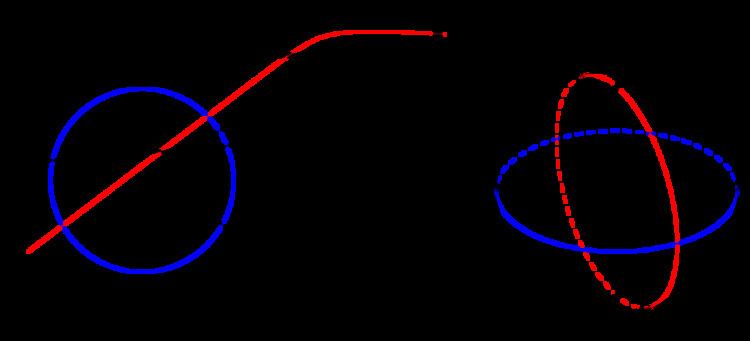 | ||
In mathematics, a Benz plane is a type of 2-dimensional geometrical structure, named after the German mathematician Walter Benz. The term was applied to a group of objects that arise from a common axiomatization of certain structures and split into three families, which were introduced separately: Möbius planes, Laguerre planes, and Minkowski planes.
Contents
Möbius plane
Starting from the real euclidean plane and merging the set of lines with the set of circles to a set of blocks results in an inhomogeneous incidence structure: three distinct points determine one block, but lines are distinguishable as a set of blocks that pairwise mutually intersect at one point without being tangent (or no points when parallel). Adding to the point set the new point
Analogously to the (axiomatic) projective plane, an (axiomatic) Möbius plane defines an incidence structure. Möbius planes may similarly be constructed over fields other than the real numbers.
Laguerre plane
Starting again from
As for the Möbius plane, there exists a 3-dimensional model: the geometry of the elliptic plane sections on an orthogonal cylinder (in
Minkowski plane
Starting from
Analogously to the classical Möbius and Laguerre planes, there exists a 3-dimensional model: The classical Minkowski plane is isomorphic to the geometry of plane sections of a hyperboloid of one sheet (non degenerated quadric of index 2) in 3-dimensional projective space. Similar to the first two cases we get the (axiomatic) Minkowski plane.
Planar circle geometries or Benz planes
Because of the essential role of the circle (considered as the non-degenerate conic in a projective plane) and the plane description of the original models the three types of geometries are subsumed to planar circle geometries or in honor of Walter Benz, who considered these geometric structures from a common point of view, Benz planes.
